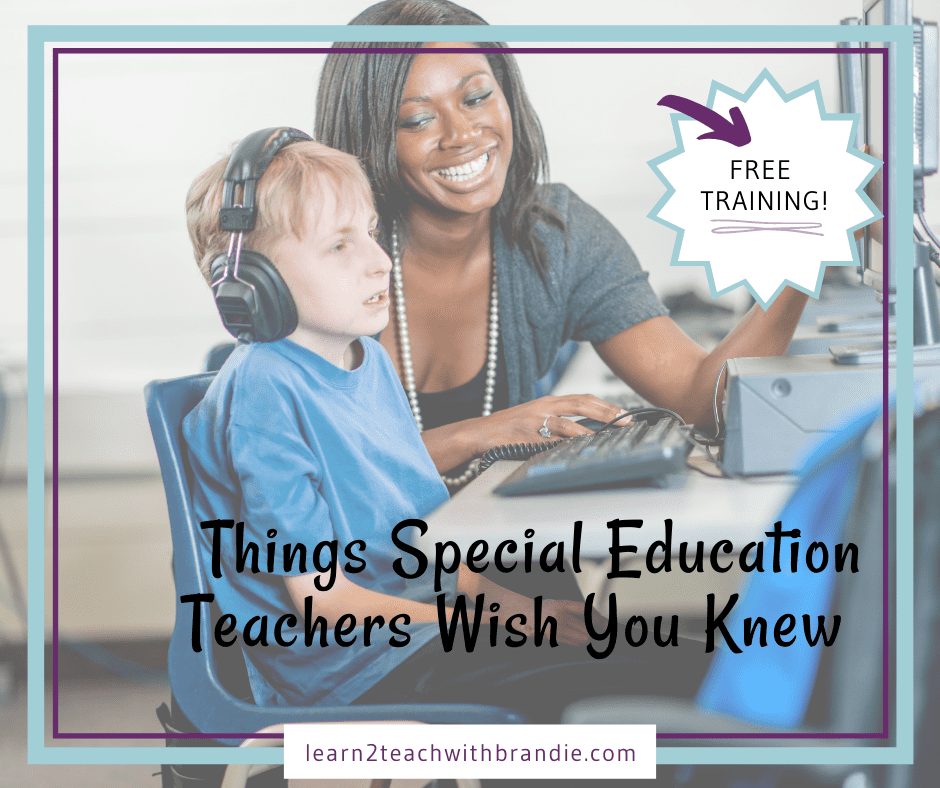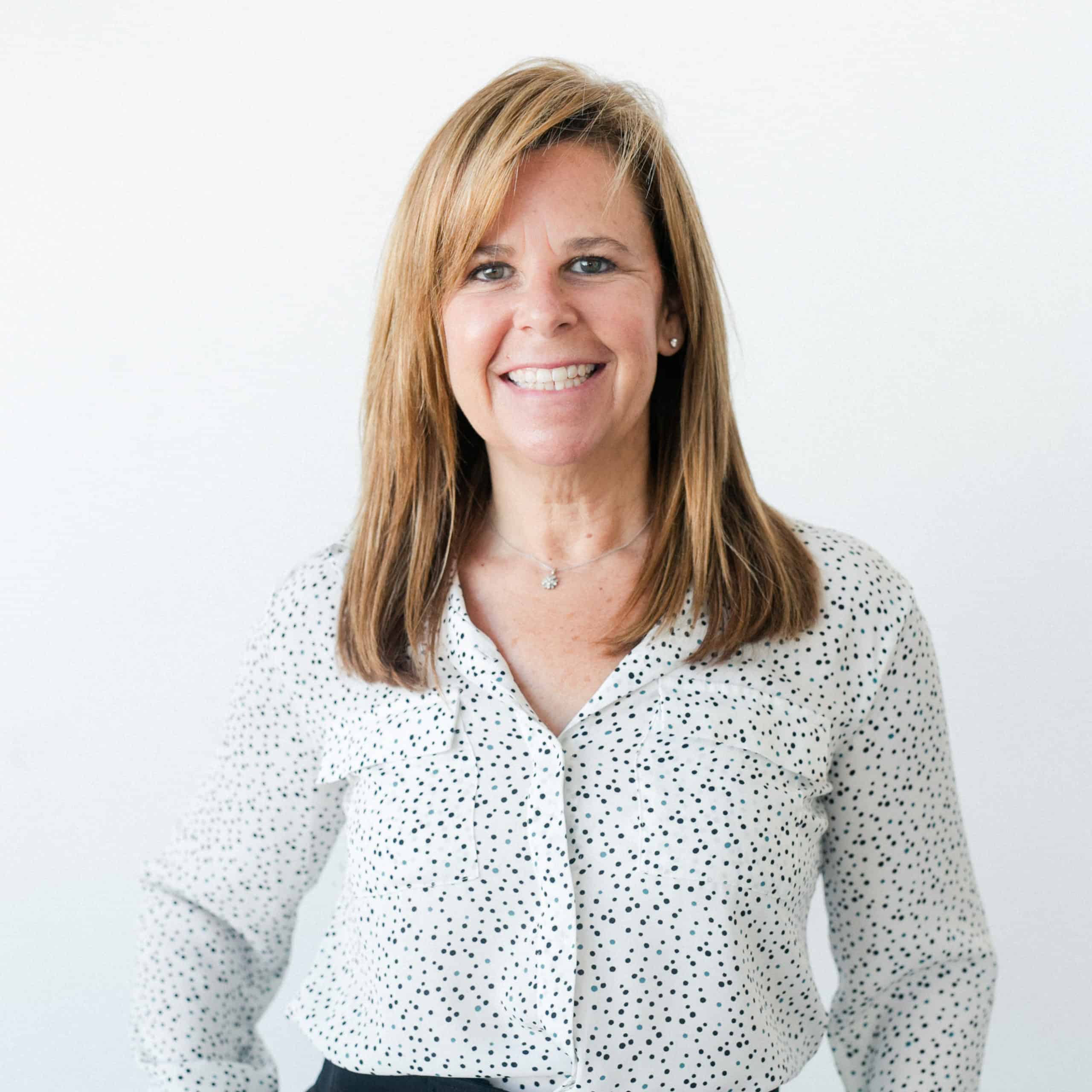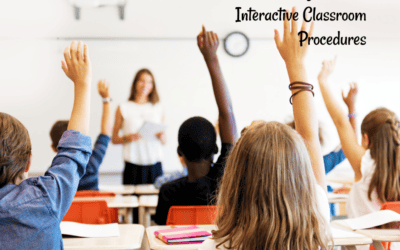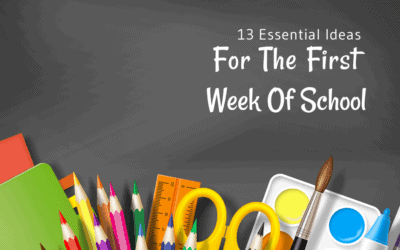When it comes to understanding special education and the IEP process, there are many things that special education teachers wish that general education teachers knew. That’s why I’m putting together the following five things that every general education teacher should be aware of.
#1: The Role of the Special Education Teacher
Sometimes there is confusion about what a special educator is, so let’s clarify that from the start.
A special education teacher IS NOT:
- A classroom assistant.
- Someone to fill in when another staff member is out.
- Crisis response. Special education teachers are not there to help with any student on campus that is having behavioral issues.
A special education teacher IS:
A special education teacher’s role is to provide instruction and support. This then facilitates a student’s ability to access their learning in the individualized way that they require. Special education teachers are experts in differentiating the curriculum to meet the individual needs of students on their caseload. They will often have advanced training in dealing with and helping to create behavior plans for students.
#2: An IEP is a Legal Document
An IEP (individualized education plan) is a LEGAL document. It MUST be implemented as it is written. This is not something a special education teacher (or even an administrator) has control over. There is a very strong federal law (IDEA) that guides everything that goes into an IEP as well as the implementation of an IEP. Once that IEP is created ALL teachers and staff need to follow it. The only way to make changes to an IEP is to hold an IEP meeting so that the team can discuss and agree to any changes.
#3: The Importance of Implementing Accommodations and Modifications
The part of the IEP that general education teachers interact with the most is the accommodations and modifications portion. This section’s purpose is to put support in place for students who need them.
I like to explain it like this: the IEP goals are what the student is working on, and the accommodations are what we as teachers use to help them. Accommodations are not optional and a teacher cannot decide not to offer them to a student. As the IEP is a legal document, ALL of the parts of the IEP are required to be implemented.
#4: General Education Teacher Feedback is CRITICAL
Effective communication between a general education teacher and a special education teacher is critical for student success. Oftentimes, the general education teacher spends the most time with a student so they have a better idea of what is taking place in the classroom. Also, general education teachers are the experts in the curriculum. Special education teachers are the experts on differentiating that same curriculum. Both teachers’ input in developing a program for a student is critical.
As a general education teacher, it’s important that you always feel comfortable letting a special education teacher know what your preferred mode of communicating is. Keep in mind though, that most special education teachers have students in multiple grade levels and classes. That may mean that they have many, many teachers to be communicating with regularly so be patient.
#5: Attendance at IEP Meetings is Mandatory
Federal law (IDEA) mandates that a general education teacher (of the student) must be present at an IEP meeting. Special education teachers have no choice in this. And…because special education teachers have so many student and teacher schedules to work around, they are not always able to schedule IEP meetings at times that work best for everyone. Once again, be kind!
#6: Behavior Management Systems That Target the “Toughest” Kid Will Meet Your Classroom Needs
Special education teachers know that classroom behavior can often be the biggest challenge that both special education and general education teachers face. Though general education teachers may not feel like experts when it comes to behavior, there is one important thing to remember: set up a system that works for your toughest student and it will then meet the needs of all of your students.
Teachers often set up a behavior management system that works for “most” of their kids. But then they get frustrated when their more difficult student is still causing disruptions. Most systems are meant to reach the “easy to reach” students; yet don’t help with those more difficult kids. When you set up a system to reach the “hard to reach”, only then will you find success.
If you want more support in setting up a behavior system that meets the needs of ALL of your students, check out my Behavior Buster Toolkit. Also – if you aren’t on the waitlist for my new course about this very topic, you can jump on it at the same time.
Having a student with special needs in your class can be challenging, but when true collaboration takes place between special and general education teachers, great things can happen!





